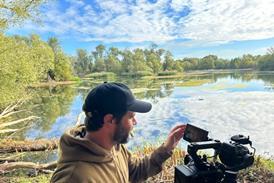IBC 2015: Broadcasters need to be bold in adopting IP workflows, according to the architect of a live IP demonstration at IBC this week.
A cut-down version of Belgian public broadcaster VRT’s LiveIP Project was on display at the European Broadcasting Union’s (EBU) stand.
Michel De Wolf, the former EVS chief technology officer and current director of technology consultancy firm Dwesam, which initiated the project, said kit from a range of vendors was selected to show the “full chain” working.
“In Brussels, where this is set up, it is a fully operational proof of concept,” he said.
“We brought a group of vendors together to prove that there is interoperability and that they can work together, and that we can create a workflow with IP-based technology.”
At a show dominated by discussions of IP, and with vendors unveiling a raft of IP-enabled kit, the focus of conversation shifted towards standards, with manufacturers aligning themselves to a handful of options for video over IP encapsulation.
As an alternative to the SMPTE 2022-6 protocol, Sony promoted its Networked Media Interface, which is based on the SMPTE standard and supported by vendors including Cisco, Imagine Communications, Vizrt and Evertz.
At its press conference, Evertz touted Aspen, which is backed by the likes of ChyronHego, Hitachi and Ross Video.
However, De Wolf encouraged broadcasters not to delay and wait for standardisation.
He said: “I agree that SMPTE 2022-6 is not the final protocol. There are limitations; one is that the audio is embedded, which is fantastic for contribution and distribution, but not so good for a live production environment.
“But the idea of this project is to live with these limitations and show that it is possible. Yes there will be other standards, but it’s only software - the hardware stays the same. Let others think on the standards and we will embrace them.”
The EBU and VRT proof of concept used SMPTE 2022-6, with the 2022-7 subset used for protection of the signals, while AES67 was the required audio standard and PTP was stipulated for the timing reference, which De Wolf said was the most important aspect in an IP workflow.
De Wolf, who is working on six other IP projects that are all currently subject to non-disclosure agreements, said he expected broadcasters to be on air using a live IP infrastructure in less than a year.
“It’s mature, you can do it. Yes it will evolve, yes it will become better, but you can do it already today.”


























No comments yet